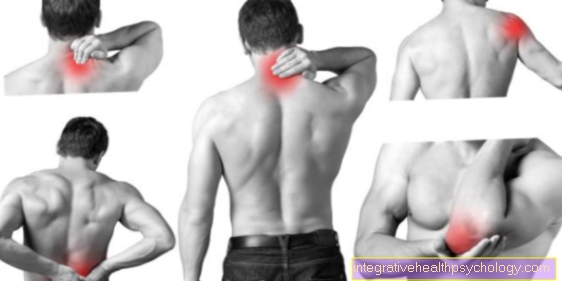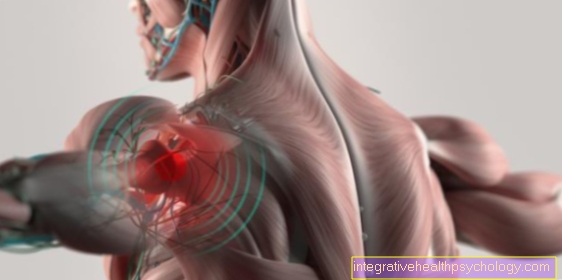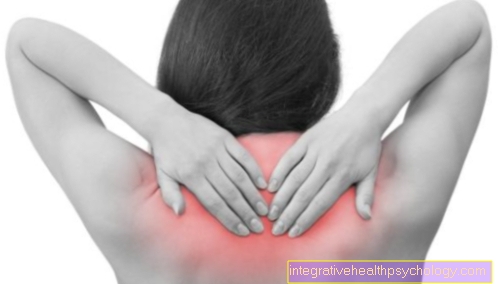Vitamin B6 - pyridoxine
to overview Vitamins
Occurrence and structure
Also Pyridoxine is widespread; it is particularly abundant in liver, pork and chicken, nuts, fish, vegetables and brewer's yeast. Pyridoxine comes in different forms, but they all have one thing in common Pyridine ring (contains a nitrogen atom), which is substituted in some places (i.e. to which different groups are attached). Pyridoxal also has an aldehyde group = H-C = O), Pyridoxole a Hydroxyl group (OH) and pyridoxamine an amino group (NH2).
Vitamin B6 is also contained in: Nuts, lentils, lamb's lettuce, potatoes, whole grains, yeast, cabbage, green beans, whole grains, wheat germ,
function
After this Vitamin B6 it is converted to pyridoxal phosphate (by adding a phosphate group)PALP) activated. As such, it is involved in
- Transaminations (Transfer of NH2 groups from one reaction partner to the other)
- Decarboxylations (Splitting off of carbon atoms)
- Deaminations (Splitting off of NH2 groups)
For those interested here is a brief explanation of the reactions listed above:
In a transamination, an amino group is transferred from an amino acid to an alpha-keto acid. This turns the amino acid into an alpha-keto acid and the alpha-keto acid into an amino acid:
- alpha-keto acid + amino acid à amino acid + alpha-keto acid
Since there is not just one alpha-keto acid and of course numerous too amino acids there, this reaction makes perfect sense - even if it initially looks as if like has been converted into like - this is how, for example, from Alanine (AS) Pyruvate (Keto acid) or from aspartate (AS) oxaloacetate (keto acid). The most important transamination reaction, however, is that from glutamate (AS) to alpha-ketoglutarate.
During decarboxylation, an amino acid is usually transformed into what is known as a biogenic amine. It is one C atom shorter and often has the most important functions in the body. Here are some examples of amino acids and biogenic amines
- Tryptophan - Serotonin / Melatonin
- Glutamate - GABA (gamma-aminobutyric acid)
- Serine - ethanolamine
- Tyrosine - DOPA (precursor to dopamine, noradrenaline and adrenaline)
The involvement of PALP in the synthesis of heme, which is part of the hemoglobin of the red blood cells, should also be mentioned.
Deficiency symptoms
Due to the frequent occurrence of PALP, they are very unspecific and occur rarely due to the diverse occurrence of pyridoxine. Symptoms can include neurological disorders (since many of the decarboxylation products of the amino acids are neurotransmitters in the nervous system), depression (possibly due to the lack of serotonin and norepinephrine resulting from the PALP deficiency), susceptibility to infarcts and anemia = anemia (due to the involvement of PALP in the heme- Synthesis).
Read more about: Vitamin deficiency and burning sensation in the legs
Overview of vitamins

Water-soluble (hydrophilic) vitamins:
- Vitamin B1 - thiamine
- Vitamin B2 - riboflavin
- Vitamin B3 - niacin
- Vitamin B5 - pantothenic acid
- Vitamin B6 - pyridoxal / pyridoxine / pyridoxamine
- Vitamin B7 - biotin
- Vitamin B9 - folic acid
- Vitamin B12 - Cobalamin
Fat-soluble (hydrophobic) vitamins:
- Vitamin A - retinol
- Vitamin C - ascorbic acid
- Vitamin D - calcitriol
- Vitamin E - tocopherol
- Vitamin K - phylloquinone / menaquinone



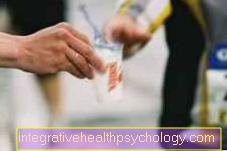





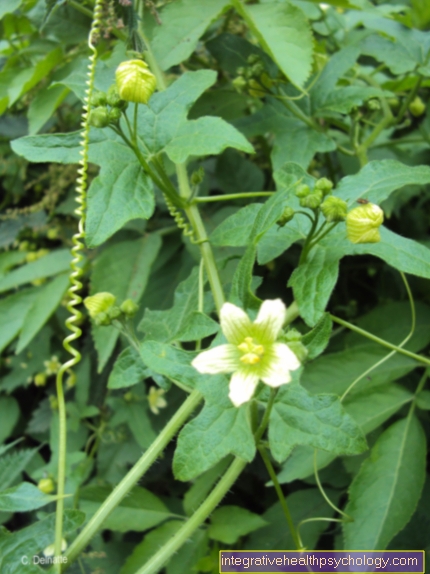


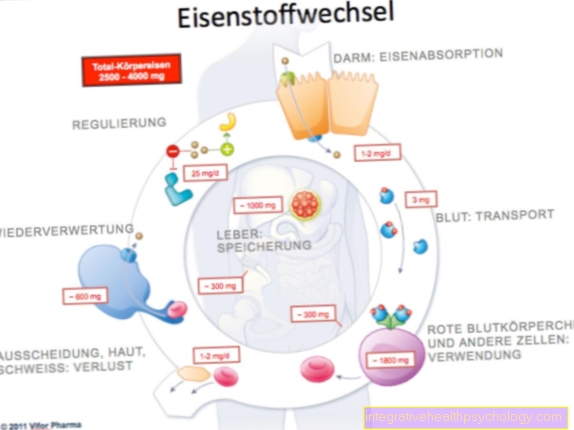


.jpg)
